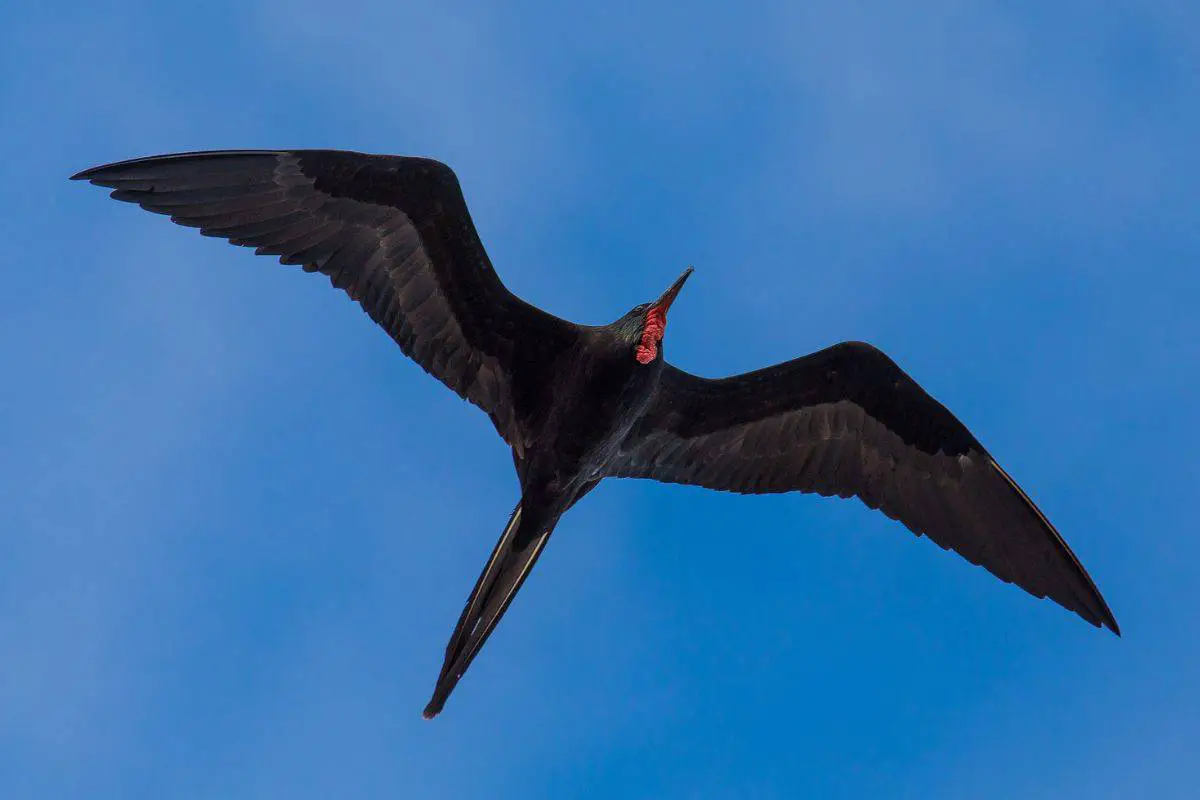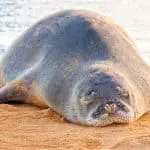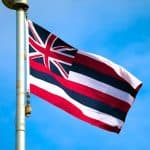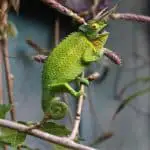The Hawaiian Islands, renowned for their rich biodiversity, serve as a sanctuary for various black birds. Some of these avian species are endemic, having evolved in isolation over millennia to the islands’ unique habitats, while other black birds in Hawaii are frequent visitors from far-off lands.
In this article, we’ll get to know some of these birds, whether they’re native or visitors, and learn about their distinct characteristics and behaviors.
11 Black birds in Hawaii
1. Black noddy
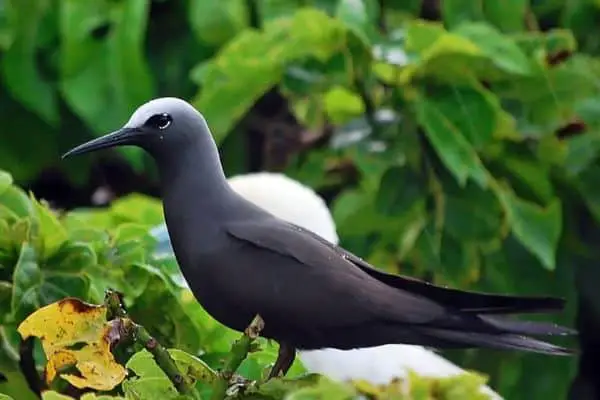
Scientific Name: Anous minutus
The black noddy is a medium-sized seabird in Hawaii known for its sleek black plumage and distinctive pale crown. These birds are thought to have come from the Indo-Pacific area and can now be found worldwide, particularly in the Pacific Ocean, the Caribbean, the Central Atlantic, and the northeast Indian Ocean.
In Hawaii, these birds breed in colonies located within 80 km of the shore. However, they fly back to other islands to roost at night. Black noddies are recognized for their agile flight and are frequently observed hovering over the water to grab fish and squid.
2. Horned puffin
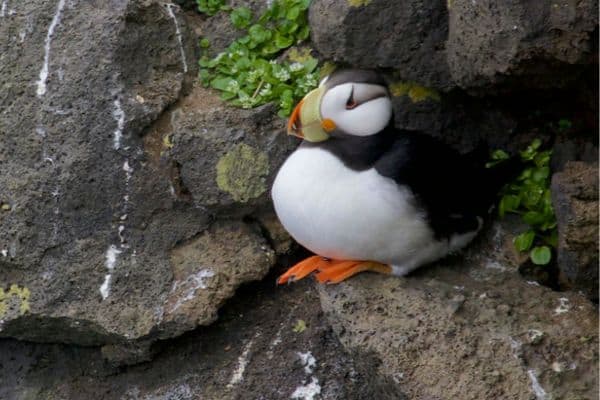
Scientific Name: Fratercula corniculata
The horned puffin is a beautiful seabird that you can find in the northern Pacific Ocean, including the Hawaiian islands. These birds have striking black and white plumage and a unique horn-like projection that extends through their eyes.
They tend to choose rocky cliffs as their nesting sites in their natural environment, and their diet mainly consists of small fish and invertebrates.
3. Hawaiian coot

Scientific Name: Fulica alai
The Hawaiian coot, or ”alae ke’oke’o, is a native waterbird species found only in the Hawaiian Islands. These birds are identifiable by their black feathers and white frontal shield, and they’re about the same size as American coots.
The Hawaiian coot lives in the wetlands, marshes, and ponds that you can find on Oahu, Maui, Molokai, and Kauai islands. These birds are known for being territorial, especially when it comes to their nesting sites.
4. Tristram’s storm petrel
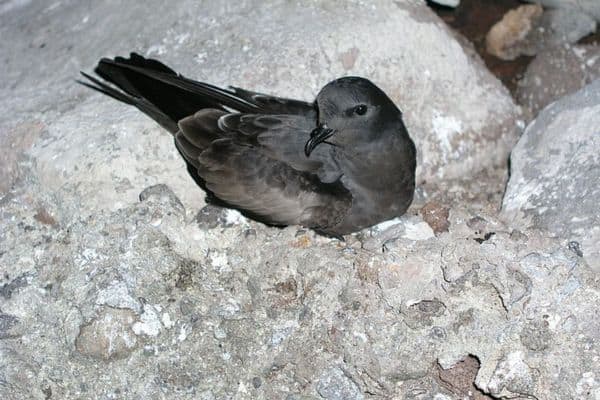
Scientific Name: Hydrobates tristrami
One of the native birds to the Hawaiian Islands is the Tristram’s storm petrel, also known as ‘akihike’ehiale. This elusive bird is well suited to a life at sea thanks to its sooty black plumage and long, angular wings. They’re also the largest member of the family of storm petrels, with a total length ranging from 24.5 to 27 centimeters.
You can find these birds living in colonies and nesting in the Northwest Hawaiian Islands, as well as on several smaller islands south of Japan.
5. Pacific swift
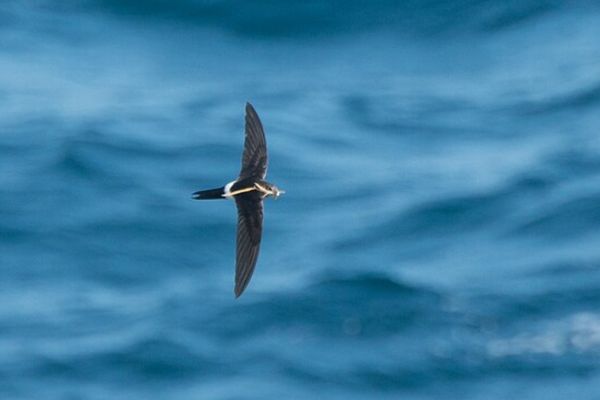
Scientific Name: Apus pacificus
The Pacific swift is a migratory bird and is an occasional visitor to the Hawaiian Islands. These birds breed in the eastern part of Asia and spend the northern hemisphere winters in Southeast Asia and Australia.
You can recognize them by the dark plumage, forked tails, and pointed wings that allow them to fly quickly and agilely. They also frequently fly with white-throated needletails.
6. Great frigatebird
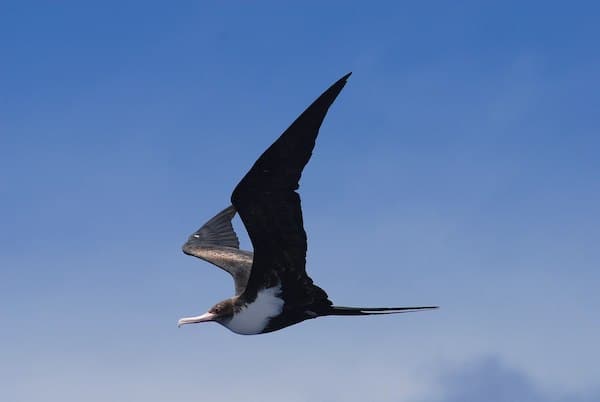
Scientific Name: Fregata minor
One of the black birds you may see in the islands of Hawaii is the Great frigatebird, also known as ‘iwa. It has long wings that are pointed and narrow at the tips, a deeply forked tail, and a gular pouch that sets it apart from other birds.
During the breeding season, males can attract females by inflating their red gular pouches. Most of these birds prefer to nest in small remote islands in the Northwestern part of Hawaii.
7. Ring-necked duck

Scientific Name: Aythya collaris
The Ring-necked Duck is a species of diving duck native to North America. They’re known to travel to Hawaii on occasion, particularly during the winter months. These ducks are easily recognizable by their distinctive ringed bill and faint brown neck ring, even though the latter is often hard to see.
Males of this species also have glossy black bodies with white breasts, while females are more subdued brown. Ring-necked ducks are most often found in freshwater habitats in Hawaii, such as ponds and marshes.
8. Leach’s storm petrel
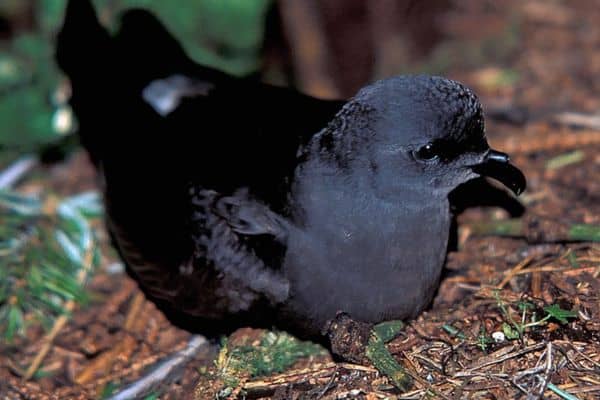
Scientific Name: Hydrobates leucorhous
From October to April, the Leach’s storm petrel can be spotted flying over the Hawaiian Islands. These birds are native to the Northern Hemisphere and can be identified by their dark feathers and forked tails.
These birds are sometimes mistaken for ʻakeʻake, but their flight pattern is more unpredictable. Leach’s storm petrels have a unique nesting behavior where they prefer to nest at night to avoid predators such as gulls and skuas.
9. Pelagic cormorant
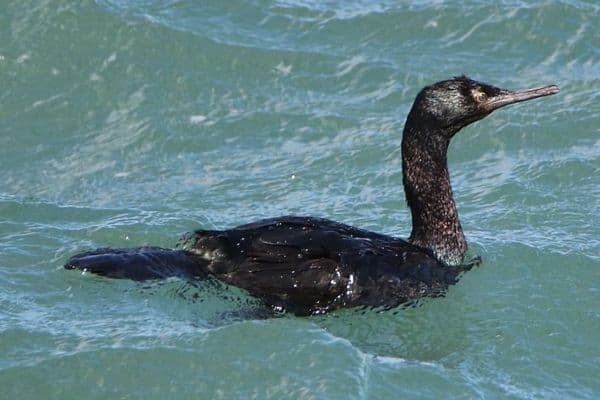
Scientific Name: Urile pelagicus
A common visitor to Hawaii is the pelagic cormorant, which is distinguished by its all-black plumage, long, thin bill, and greenish iridescence during the non-breeding season. However, during the breeding season, these species develop two short crests, white thighs, and their patch of dark, naked skin beneath the eye turns magenta.
These birds are known for their impressive diving abilities, as they can dive up to 140 feet deep to catch creatures that live on the ocean floor.
10. Lesser frigatebird
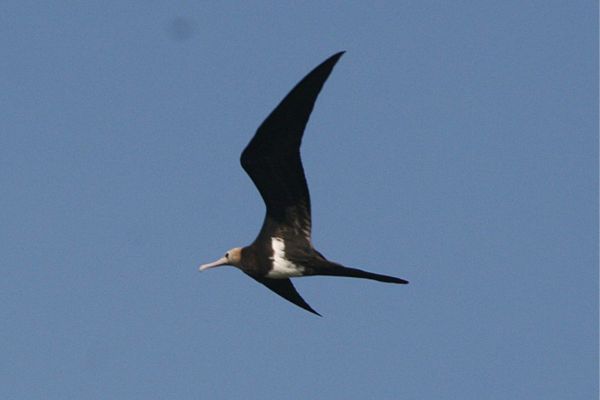
Scientific Name: Fregata ariel
The Lesser frigatebird is a type of seabird that can sometimes be seen in Hawaii. It’s recognized by its long, slender wings, deeply forked tail, and red gular pouch that’s unique to males. They’re typically found in tropical regions and breed on the islands of the Indian Ocean.
Male birds can be recognized by their shiny black feathers, whereas females have white chests. Lesser frigatebirds are often recognized for their kleptoparasitism behavior, which involves stealing food from other birds while in flight.
11. Christmas shearwater

Scientific Name: Puffinus nativitatis
You may be familiar with the Christmas shearwater as a resident of the Christmas Islands, however, this species is also found in the Northwestern Hawaiian Islands. These birds forage in sizable flocks of different species and are distinguished by their short tails and blackish-grey plumage with a rusty-brown tint. The birds are known as ʻaoʻū in Hawaii and are often spotted in rock crevices or under dense vegetation on sandy islands.
